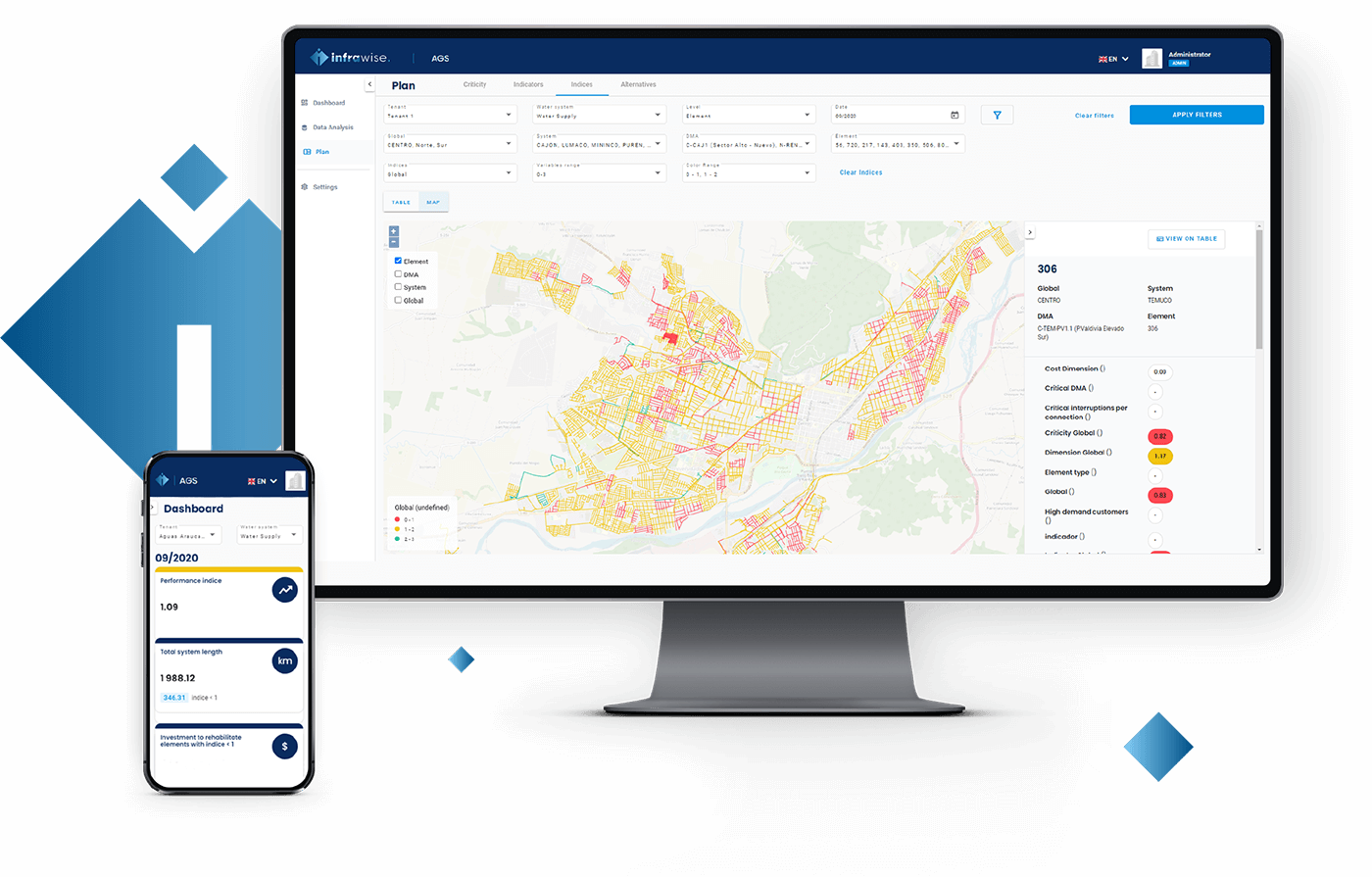
Infrawise is decision-making support software for the renovation of water supply and wastewater drainage systems.
How does it work?
Data collection and integration
Network registration, technical and operational information is collected and then integrated into Infrawise.
Integrated Analysis
Processing performance metrics, cost, risk and level of criticality from the app library and/or defined by the user. The analysis is carried out at different levels: elements, area (ZMC or basin), system, global.
Assessment and categorisation
Analysis based on indices for identifying the critical elements and categorising the priorities for renovation.
Assessment of alternatives
Establishment of an optimised renovation solution in line with the aims and goals of the Water Utility:
improved performance, investment amount or length of network to be renovated. Possibility of defining several renovation alternatives for the Water Utilities entire network or just for a specific part of it.
Investment projection
Analysis based on indices for identifying the critical elements and categorising the priorities for renovation.
